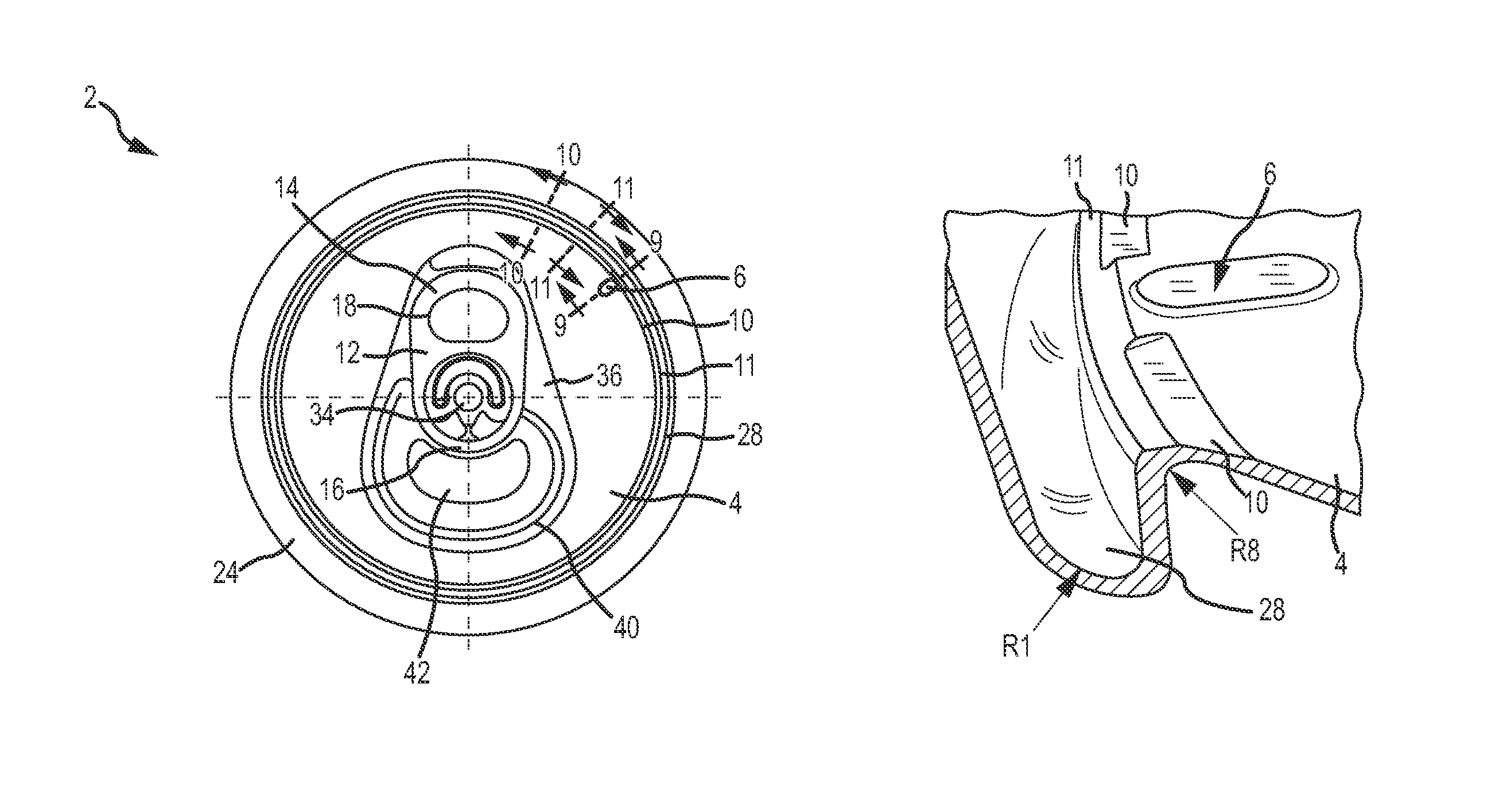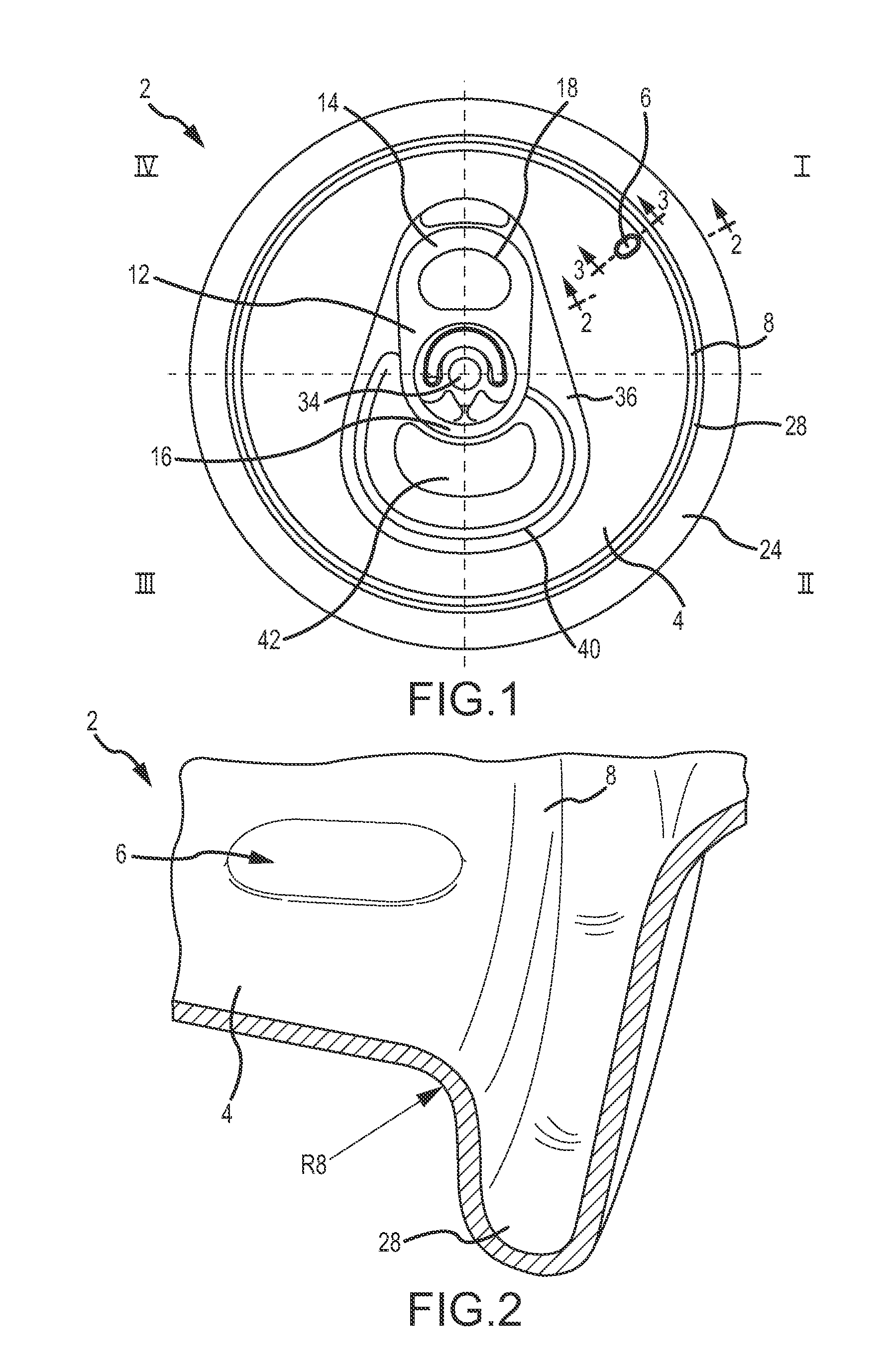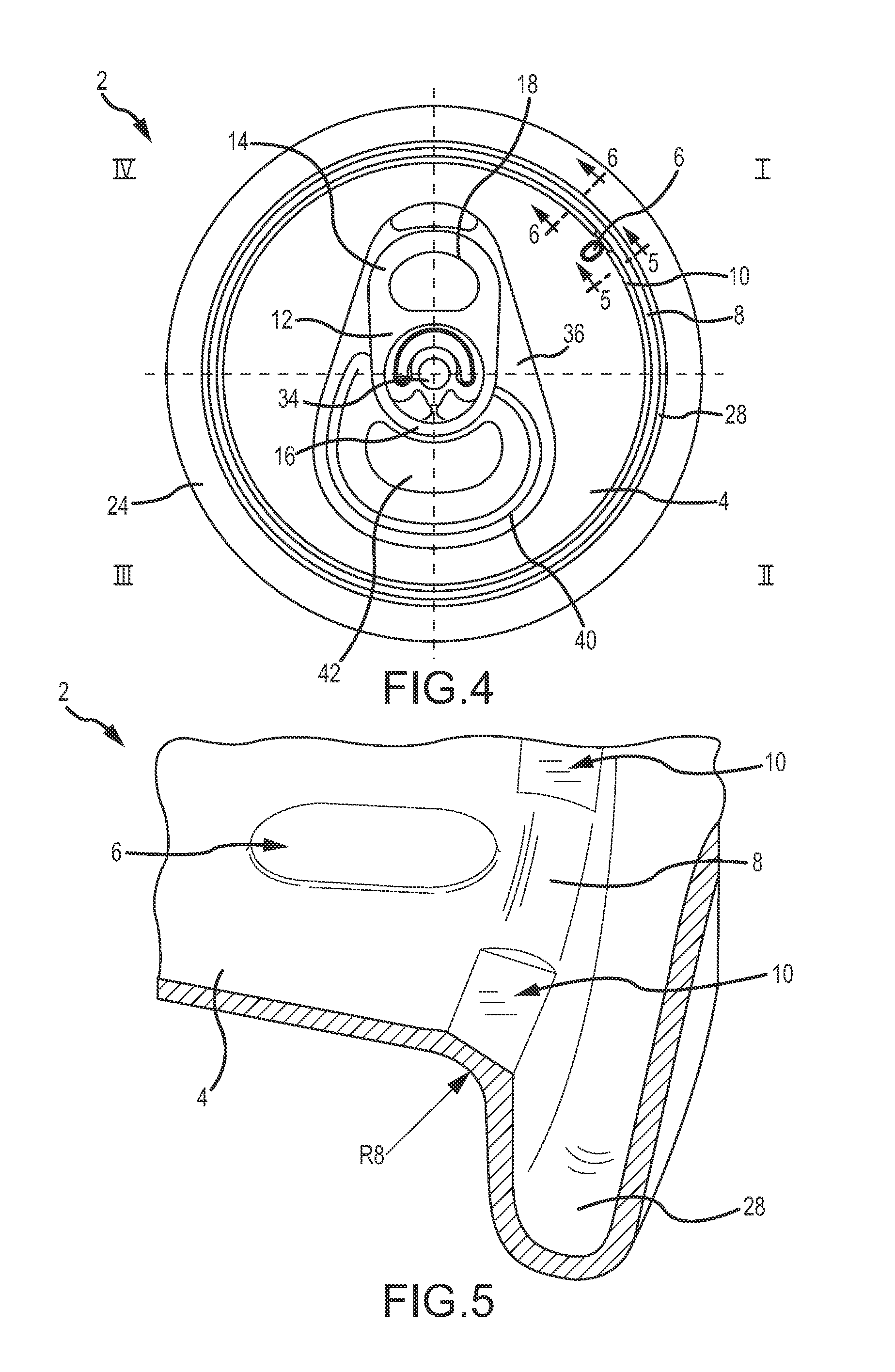Container end closure with buckle control feature
a technology for container end closures and buckles, applied in the field of container end closures with buckle control features, can solve problems such as failure, leakage, fracture of score, etc., and achieve the effect of improving buckle resistan
- Summary
- Abstract
- Description
- Claims
- Application Information
AI Technical Summary
Benefits of technology
Problems solved by technology
Method used
Image
Examples
second embodiment
[0068]FIG. 4 illustrates the public side of an end closure 2 with controlled buckling characteristics. The end closure2 may comprise a central panel 4, a panel radius 8, a tab 12, and a countersink 28 interconnected to a chuck wall interconnected to a peripheral curl 24. The tab 12 may comprise a tab nose 16 opposite a tab tail 14 and a lift ring 18. The tab 12 may be interconnected to the central panel 4 using a rivet 34. The central panel 4 may comprise an induced buckle coin 6, a deboss area 36, and a score line 40 defining a tear panel or pour opening 42.
[0069]More specifically, FIG. 4 shows the end closure 2 of FIG. 1 after an interrupted panel coin 10 has been manufactured into the panel radius 8 of the end closure 2. The interrupted panel coin 10 may also be called a “non-continuous panel coin” herein. The interrupted panel coin 10 may or may not actually be coined. The interrupted panel coin 10 is positioned proximate to the peripheral edge of the central panel 4 and is less...
third embodiment
[0074]FIG. 7 shows the public side of an end closure 2. The end closure 2 may comprise a central panel 4, a tab 12, and a countersink 28 interconnected to a chuck wall interconnected to a peripheral curl 24. The tab 12 may comprise a tab nose 16 opposite a tab tail 14 and a lift ring 18. The tab 12 may be interconnected to the central panel 4 using a rivet 34. The central panel 4 may comprise an induced buckle coin 6, a deboss area 36, and a score line 40 defining a tear panel or pour opening 42.
[0075]More specifically, FIG. 7 shows the end closure 2 after a continuous panel coin 11 that extends 360° around the central panel 4 has been manufactured into the panel radius, which is positioned between the central panel 4 and the countersink 28 inner panel wall 32. The end closure 2 of FIG. 7 has a continuous panel coin 11, whereas the end closure of FIG. 4 has a rounded panel radius 8. The continuous panel coin 11 is a primary coined region which extends continuously around the outer p...
fourth embodiment
[0083]FIG. 12 shows the public side of an end closure 2. The end closure 2 generally comprises a central panel 4, a pull tab 12, and a countersink 28 interconnected to a chuck wall interconnected to a peripheral curl 24. The pull tab 12 may comprise a tab nose 16 opposite a tab tail 14 and a lift ring 18. The tab 12 is typically interconnected to the central panel 4 using a rivet 34. The central panel 4 may comprise an induced buckle coin 6, a deboss area 36, and a score line 40 defining a tear panel or pour opening 42.
[0084]FIG. 12 additionally depicts the end closure 2 with a continuous panel coin 11 that extends 360° around the central panel 4 that has been manufactured proximate to the peripheral edge of the central panel 4. The end closure 2 of FIG. 12 has a continuous panel coin 11, and a rounded panel radius (not labeled in FIG. 12). The continuous panel coin 11 is a primary coined region which extends continuously around the entire outer peripheral edge of the central panel ...
PUM
| Property | Measurement | Unit |
|---|---|---|
| width | aaaaa | aaaaa |
| internal pressures | aaaaa | aaaaa |
| length | aaaaa | aaaaa |
Abstract
Description
Claims
Application Information
 Login to View More
Login to View More - R&D
- Intellectual Property
- Life Sciences
- Materials
- Tech Scout
- Unparalleled Data Quality
- Higher Quality Content
- 60% Fewer Hallucinations
Browse by: Latest US Patents, China's latest patents, Technical Efficacy Thesaurus, Application Domain, Technology Topic, Popular Technical Reports.
© 2025 PatSnap. All rights reserved.Legal|Privacy policy|Modern Slavery Act Transparency Statement|Sitemap|About US| Contact US: help@patsnap.com



